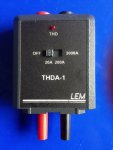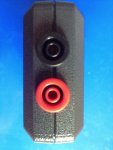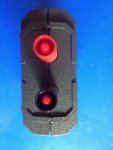Since a DC clamp can only work with something like a Hall Effect sensor, it would have to have its own battery power or take power from the meter it is attached to. I have not looked really hard, but I had only seen DC clamps that were integrated with a meter.
There are standalone probes with power supplies from
sites like this but I have no idea what the prices are or what sort of voltage they output or what impedance is required at the voltmeter input. The ones designed for use with oscilloscopes probably were built with an input impedance of 1 megohm or more in mind.






